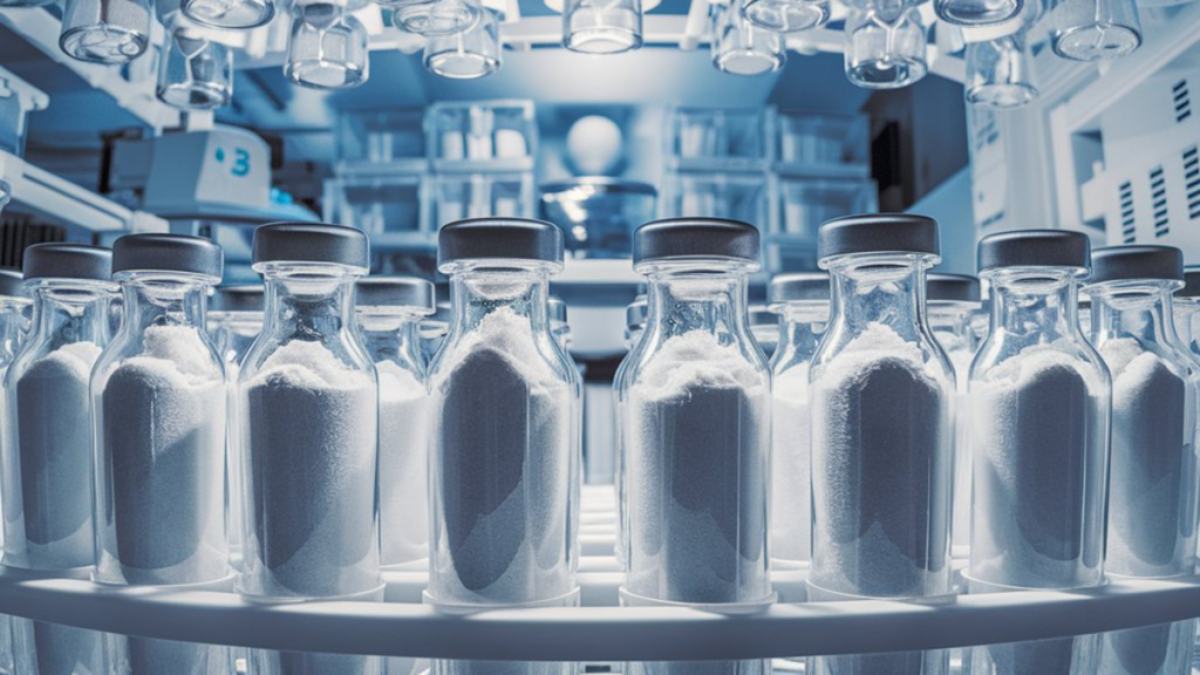Peptide Storage Guide

Proper storage of peptides is crucial for maintaining their stability and effectiveness in scientific research and therapeutic applications. Peptides are susceptible to degradation when exposed to unfavorable conditions such as temperature extremes, moisture, light, and oxygen.
Here’s what you need to know to maximize the longevity and efficacy of these valuable molecules with proper storage.
Factors Affecting Peptide Stability
Peptides are delicate molecules that can be easily damaged if not stored properly. Several factors can affect the stability of peptides, including temperature, moisture, light, and oxygen:
- Temperature: Peptides should be stored at a consistent and appropriate temperature to prevent degradation. Extreme heat or cold can lead to structural changes in peptides, affecting their effectiveness.
- Moisture: Moisture can cause peptides to degrade rapidly.
- Light: Exposure to light, especially ultraviolet (UV) light, can cause peptides to degrade.
- Oxygen: Peptides can be oxidized in the presence of oxygen, leading to degradation.
Guidelines for Storing Peptides
Proper storage of peptides is essential to maintain their stability and effectiveness. Follow these guidelines to ensure optimal storage conditions for your peptides:
- Temperature: Store peptides at the recommended temperature range, typically between -20°C and -80°C for long-term storage. Short-term storage at higher temperatures may be acceptable for some peptides, but consult the peptide supplier or literature for specific recommendations.
- Moisture: Keep peptides in a dry environment, as moisture and contact with water leads to degradation. Use desiccants in storage containers to absorb any moisture present.
- Light: Protect peptides from light exposure, especially UV light, which can degrade peptides. Store peptides in opaque containers or wrap them in aluminum foil to block out light.
- Oxygen: Minimize oxygen exposure by tightly sealing peptide storage containers. Consider using inert gases such as nitrogen or argon to displace oxygen in the storage environment.
- Avoid Freeze-Thaw Cycles: Repeatedly freezing and throwing peptides can degrade them.
- Labeling: Clearly label peptide containers with the peptide name, concentration, and date of preparation to ensure proper identification and tracking.
- Inventory Management: Keep track of your peptide inventory and expiration dates to ensure that peptides are used before they degrade.
Following these guidelines will help maintain the stability and effectiveness of peptides, ensuring reliable results in experiments and treatments.
Storage Containers and Methods
Choosing the right storage containers and methods is crucial for maintaining the stability of peptides. Here are some considerations:
- Storage Containers: Use containers that are chemically inert and suitable for storing peptides. Common options include glass vials or high-quality plastic vials. Avoid using containers that may react with peptides or leach contaminants.
- Sealing: Ensure that storage containers are tightly sealed to prevent moisture and oxygen exposure. Use appropriate sealing methods, such as screw caps or crimp caps, depending on the type of container.
- Desiccants: Consider using desiccants in storage containers to absorb any moisture that may be present.
- Avoid Contamination: Use sterile techniques when handling and storing peptides in containers. Contamination can degrade peptides and affect experimental results.
- Storage Location: Store peptides in a cool, dry, dark environment to minimize degradation. Avoid storing peptides near sources of heat, light, or moisture.
- Transport: When transporting peptides, use insulated containers or cool packs to maintain the appropriate temperature. Avoid exposing peptides to extreme temperatures during transport.
Best Practices for Storing Peptides
The ideal way to store peptides depends on whether or not they’re dry (lyophilized) or reconstituted (mixed with a solvent):
- Freeze-dried peptides won’t degrade at room temperature (provided they’re kept in the dark) for 1-2 months. But it’s still best to keep them in a refrigerator at 4°C (39°F) if you plan to use them in the short-term. For long-term storage, dry peptides should be kept in the freezer at around -20°C (-4°F), but preferably at temperatures as low as 80°C (-112°F).
- Reconstituted peptides should be kept in the fridge at 4°C (39°F) for short-term use (~1 month). This way, they will remain stable for about 30 days. For long-term storage, they should be aliquoted and kept in the freezer between -20°C (-4°F) or -80°C (-112°F).
As you probably guessed, peptides are less stable when dissolved in solution, so it’s best to keep them in their lyophilized form for as long as possible before use.
Peptide Preservation: Ensuring Potency for Future Discoveries
In conclusion, proper storage of peptides is crucial for maintaining their stability and effectiveness. Here’s a quick summary of the most important tips:
- Dry (lyophilized) peptides are stable at room temperature for 30-60 days
- Store peptides in a cool, dark, dry place
- Avoid exposure to light
- Avoid repeatedly freezing and thawing
- Avoid exposure to air and moisture
- If possible, avoid storing peptides in solution long-term
By following the guidelines and best practices outlined in this article, researchers and clinicians can ensure that peptides remain potent and reliable for use in experiments and treatments.



